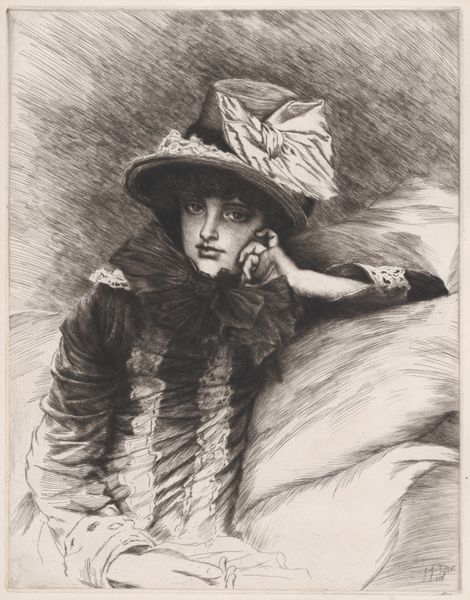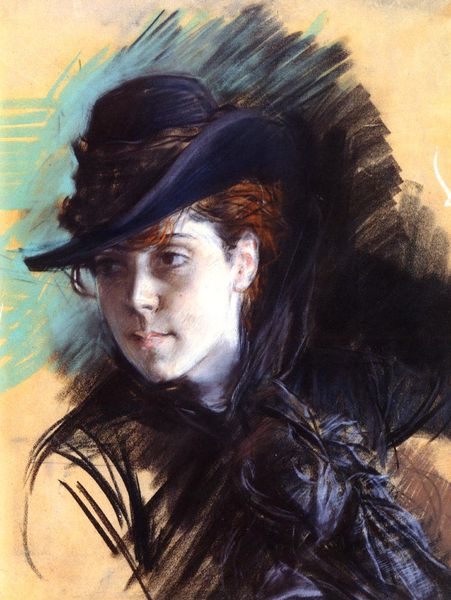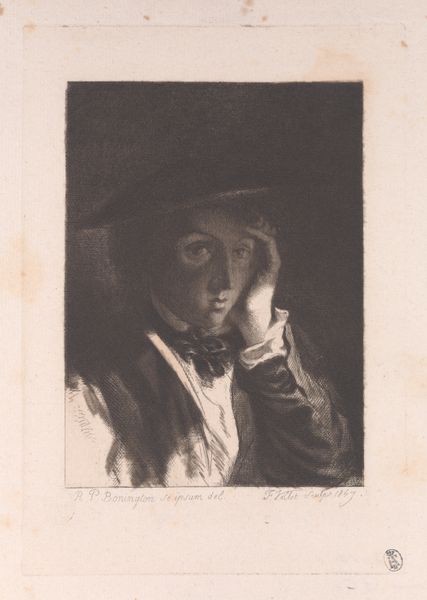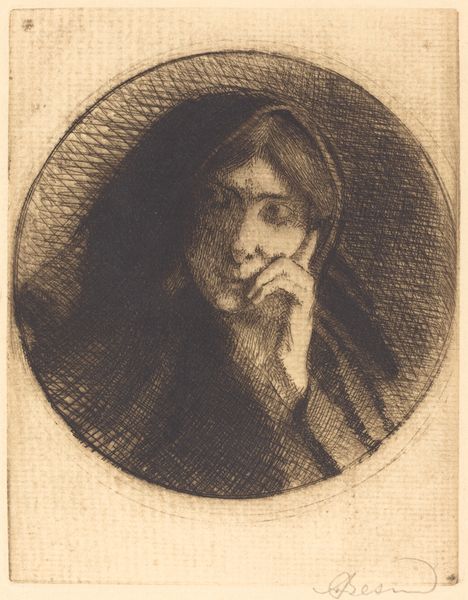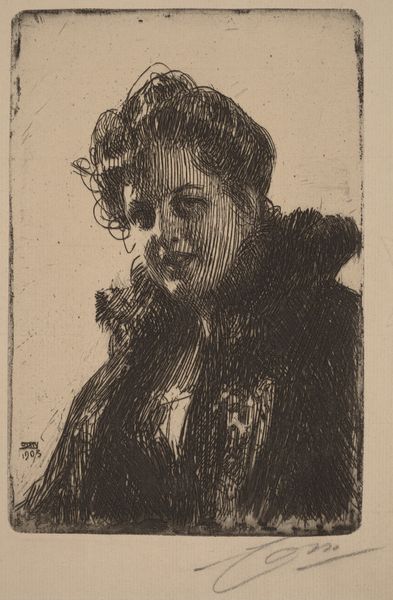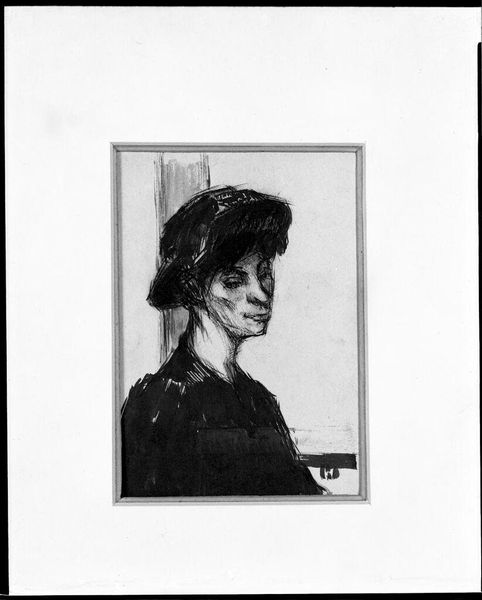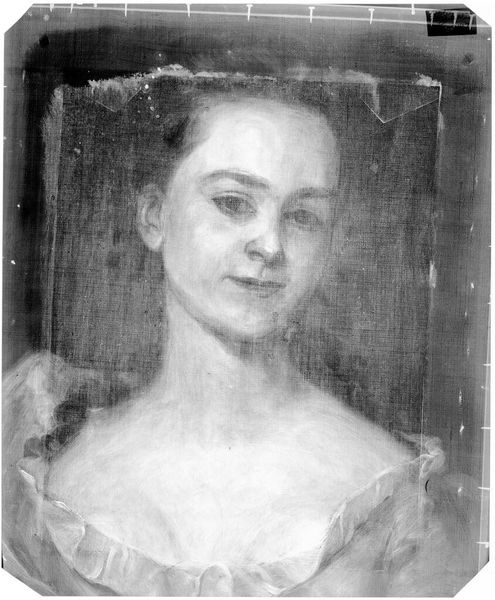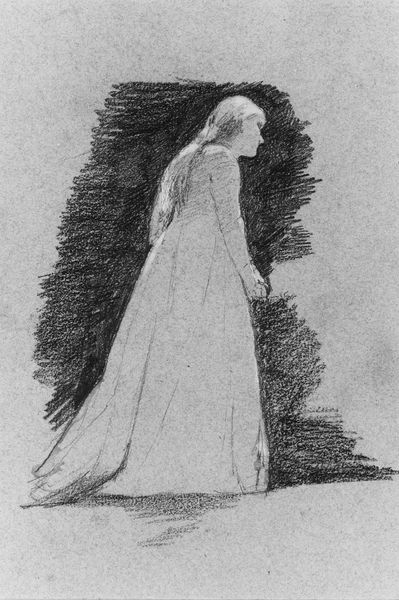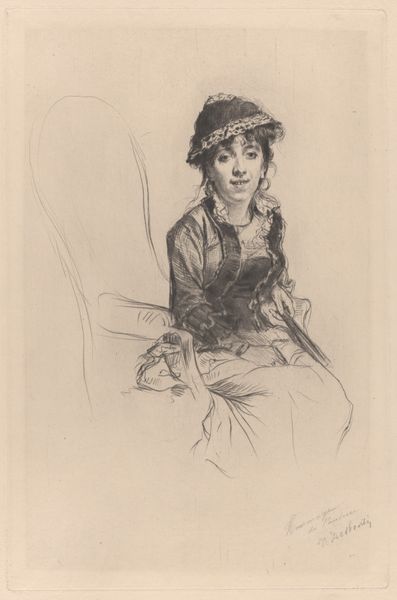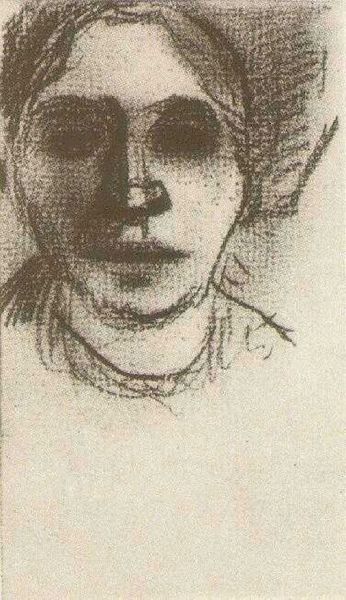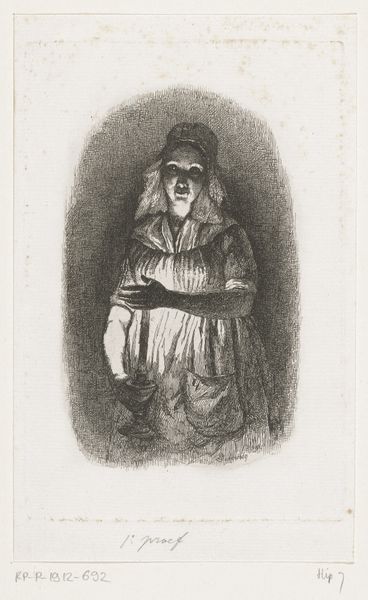
drawing, pencil
#
portrait
#
drawing
#
pencil
#
academic-art
#
realism
Copyright: Public domain
Editor: Here we have Ivan Kramskoy’s "Portrait of Sofia Nikolaevna Kramskoy (in hat)," a pencil drawing from 1863. I find the use of light so striking – it almost feels like a spotlight is on her face. What do you see in this piece? Curator: The spotlight effect you noted is quite intentional. In a socio-political context, works like these often played with the viewer’s gaze, framing individuals – especially women – within very specific parameters of visibility and respectability. Kramskoy here directs our attention, controls our interpretation. Notice how the darkness surrounding her softens the gaze, while simultaneously accentuating it. How does the hat function in relation to the rest of the portrait? Editor: It casts a shadow, doesn't it? It conceals more than it reveals, adding to the mystery, but is that common? Curator: Precisely. Headwear became symbolic in 19th-century portraiture, often suggesting aspects of identity, class, even social rebellion. This portrait coincided with a burgeoning intelligentsia in Russia and questions surrounding the role of women. It's a delicate balance, isn't it? Editor: It is. So, the portrait's not just about Sofia, but about societal expectations as well. That adds a whole layer to how I view it. Curator: Exactly. Thinking about how art functions as a visual document, reflecting and shaping its cultural landscape, enriches our viewing experience. What do you take away from it now? Editor: It makes me think about what it meant to be a woman – specifically, what it meant to be visible – in 19th-century Russia. Fascinating how one image can hold so much.
Comments
No comments
Be the first to comment and join the conversation on the ultimate creative platform.
